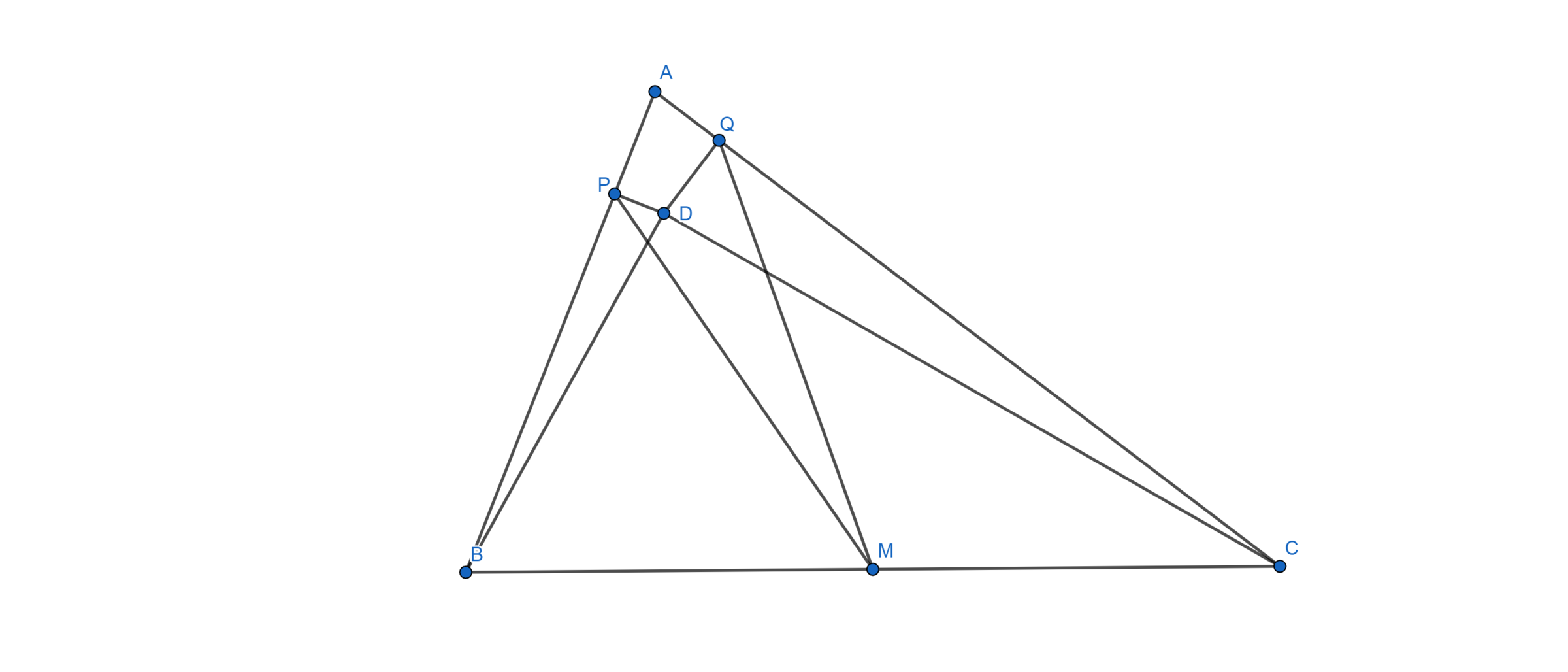Prove it

Suppose that P and Q are points on the sides AB and AC respectively of △ABC. The perpendiculars to the sides AB and AC at P and Q respectively meet at D, an interior point of △ABC. If M is the midpoint of BC, prove that PM = QM if and only if ∠BDP=∠CDQ .
I tried to come up with a solution using Euclidean geometry only, but to no avail.
No vote yet
1 vote
Easy Math Editor
This discussion board is a place to discuss our Daily Challenges and the math and science related to those challenges. Explanations are more than just a solution — they should explain the steps and thinking strategies that you used to obtain the solution. Comments should further the discussion of math and science.
When posting on Brilliant:
*italics*or_italics_**bold**or__bold__paragraph 1
paragraph 2
[example link](https://brilliant.org)> This is a quote# I indented these lines # 4 spaces, and now they show # up as a code block. print "hello world"\(...\)or\[...\]to ensure proper formatting.2 \times 32^{34}a_{i-1}\frac{2}{3}\sqrt{2}\sum_{i=1}^3\sin \theta\boxed{123}Comments
PM=QM is a direct result of the Nine-Point Circle Theorem
Log in to reply
But P and Q are given to be random points on AB & AC respectively. And yes, the result holds when D is the orthocentre.
Log in to reply
Log in to reply
But points P and Q are given to be random which indicates that points P, D and C should not be collinear necessarily. Same thing applies for points Q, D and B.
Log in to reply
Yes, but when the angles are equal, doesn't it imply that they are collinear (vertically opposite angles) ?
Log in to reply
No, not necessarily. It's still possible for them to be equal without being intersected in lines.
I found a solution here. https://math.stackexchange.com/questions/3961588/geometric-problem-concerning-relation-of-equal-segments-and-angles
Log in to reply
That was a nice problem!
Log in to reply
Indeed!
test
Log in to reply
I tested the result through a software. It holds.